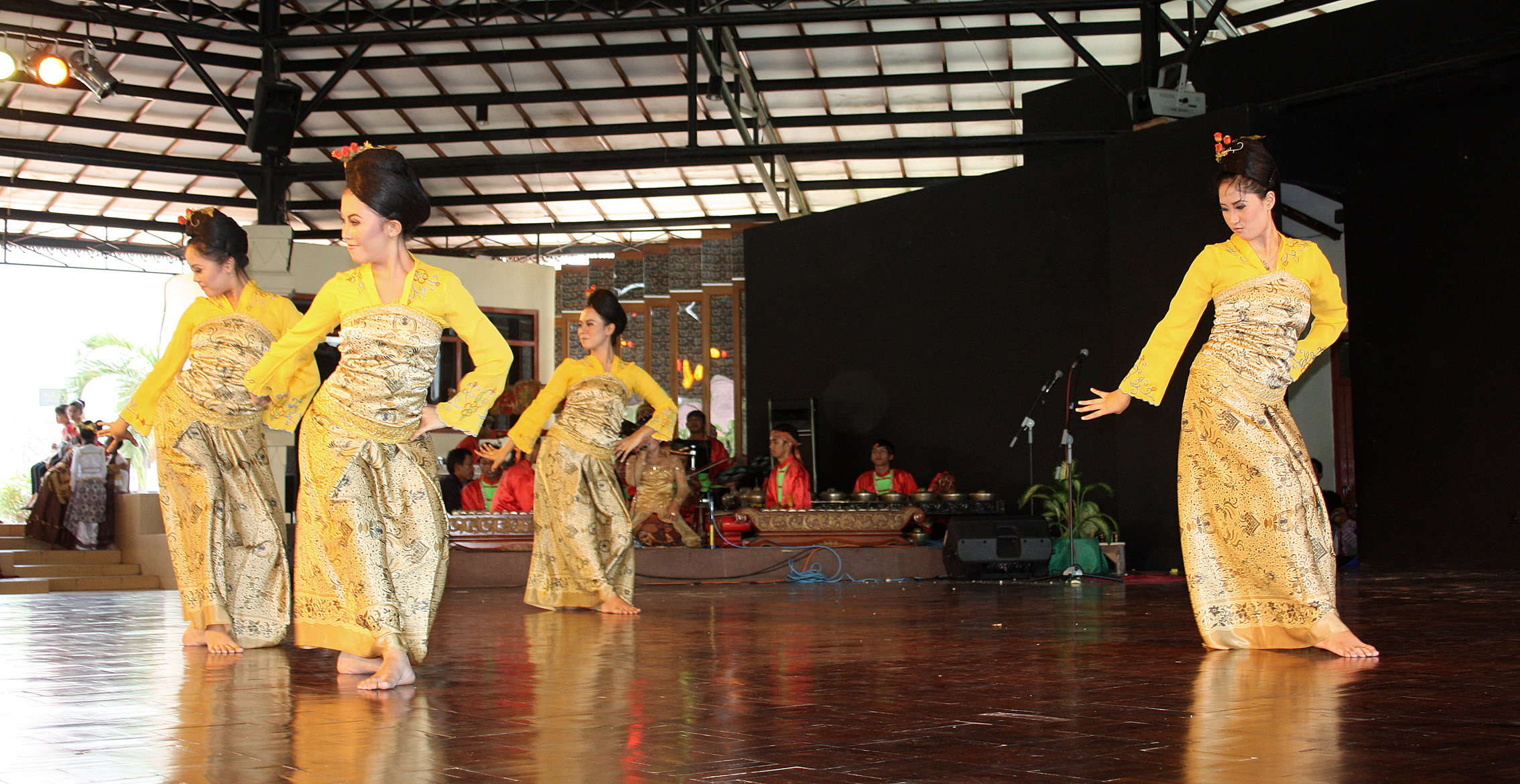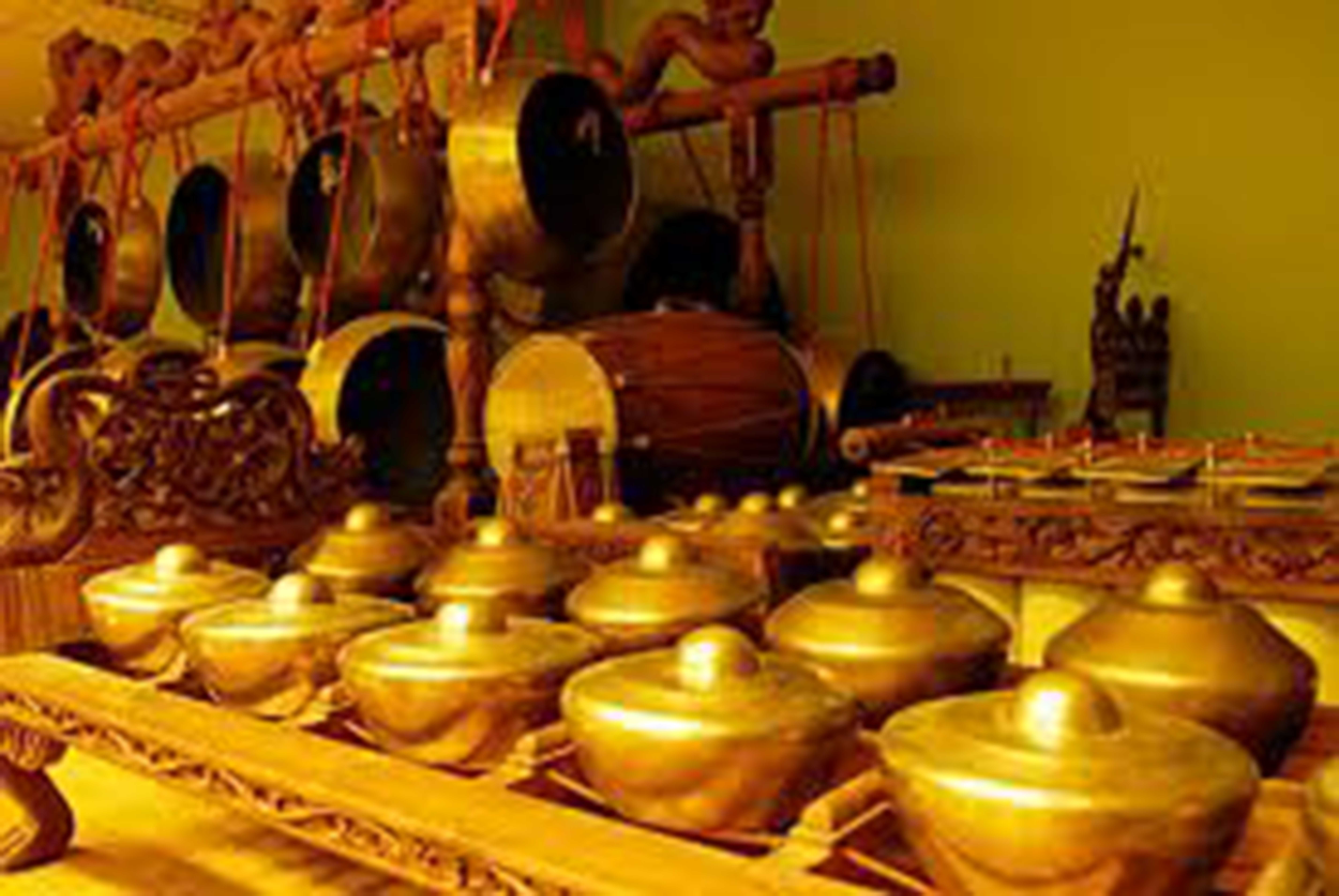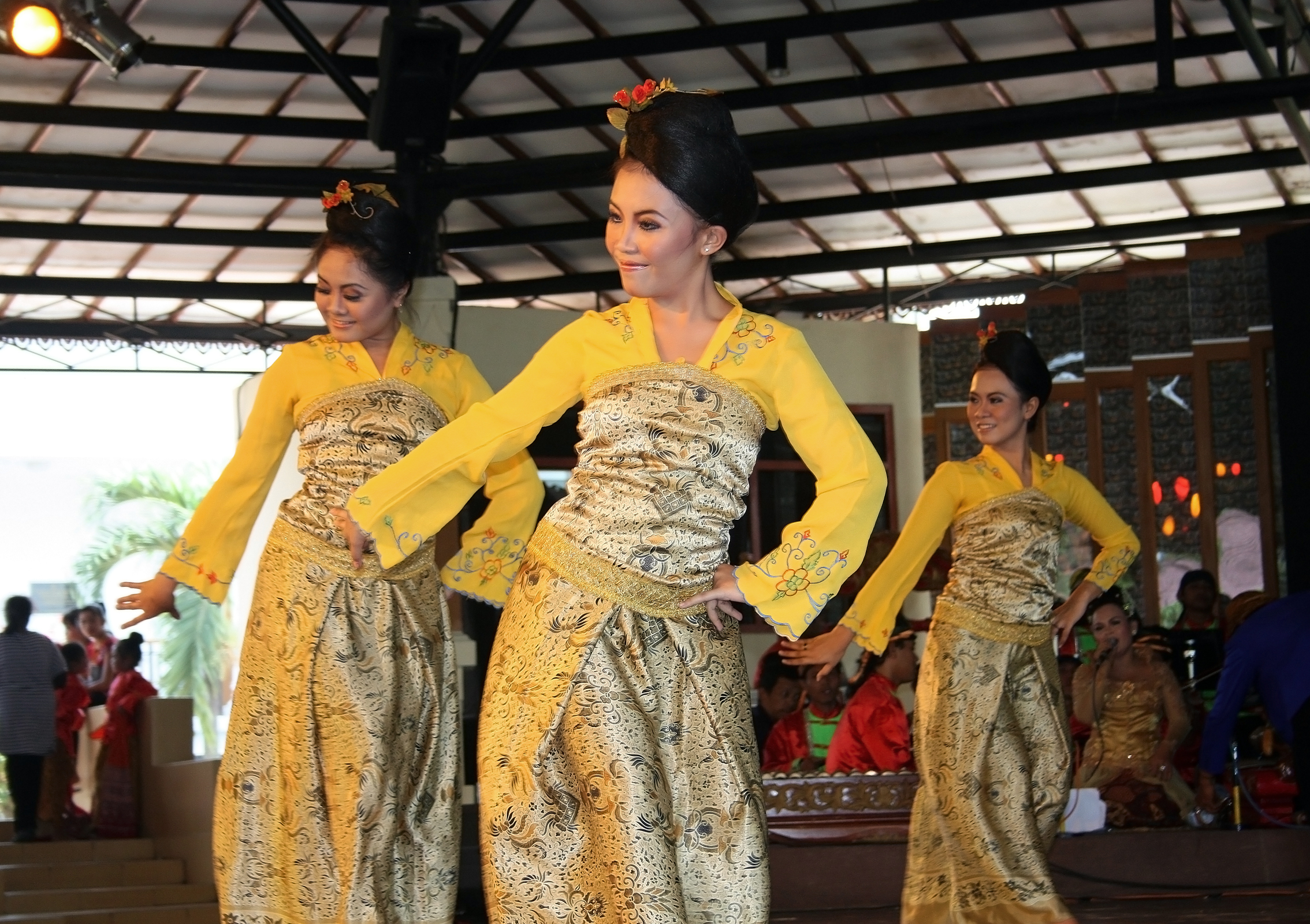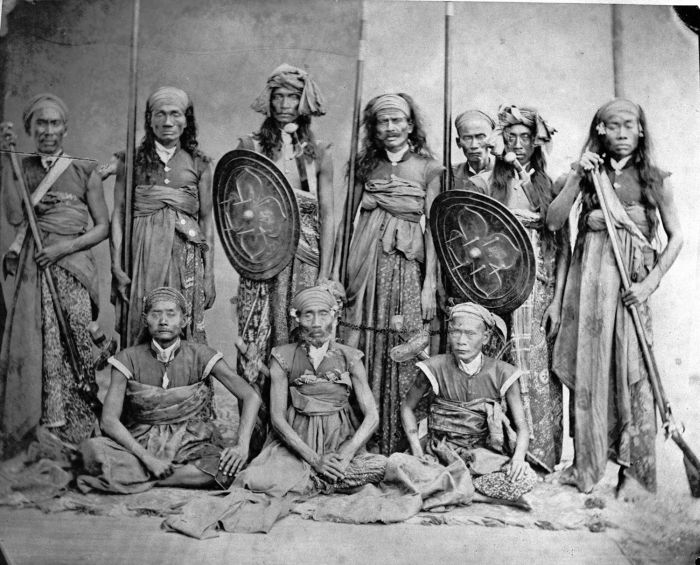|
Jaipongan Bunga Tanjung 01
Jaipongan (), also known as Jaipong, is a popular traditional dance of Sundanese people from Indonesia. The dance was created by Gugum Gumbira, based on traditional Sundanese Ketuk Tilu music and pencak silat movements. Background In 1961, Indonesian President Sukarno prohibited rock and roll and other western world, western genres of music, and challenged Indonesian musicians to revive the indigenous arts. The name jaipongan came from people mimicking of the sounds created by some of the drums in the ensemble. Audiences were often heard shouting jaipong after specific sections of rhythmic music were played. Jaipongan debuted in 1974 when Gugum Gumbira and his Gamelan degung, degung and dancers first performed in public. The most widely available album of Jaipongan outside of Indonesia is ''Tonggeret'' by singer Idjah Hadidjah and Gugum Gumbira's Jugala orchestra, released in 1987, and re-released as ''West Java: Sundanese Jaipong and other Popular Music'' by Nonesuch Records, ... [...More Info...] [...Related Items...] OR: [Wikipedia] [Google] [Baidu] |
Gamelan Degung
''Gamelan degung'' is a form of Sundanese musical ensemble that uses a subset of modified gamelan instruments with a particular mode of ''degung'' scale. The instruments are manufactured under local conditions in towns in West Java such as Bogor and Bandung. ''Degung'' music is often played at public gatherings in West Java, such as at local elections, as well as many other events. There is international interest in ''degung'' as well among communities in other countries interested in Indonesia and gamelan music.Dewi Anggraeni"Melbourne: Gamelan, elephants and 'Jackpot'" , ''The Jakarta Post'', 22 February 2004. Gamelan degung also playable in '' madenda'' scale, which included in the set as a complementary tone, usually marked as -3/''ni'' tone in the set. Playing gamelan degung in this scale requires the substitution of the 3/''na'' metal bars into -3/''ni'' tone on all instruments. Instruments The instrumentation of ''gamelan degung'' is quite flexible. It may include: ... [...More Info...] [...Related Items...] OR: [Wikipedia] [Google] [Baidu] |
Gambang
A gambang, properly called a gambang kayu ('wooden gambang') is a xylophone-like instrument used among people of Indonesia in gamelan and kulintang, with wooden bars as opposed to the metallic ones of the more typical metallophones in a gamelan. A largely obsolete instrument, the gambang gangsa, is a similar instrument made with metal bars. Gambang kayu The bars of the instrument are made of a se wood, generally teak. It also found in ironwood (kayu besi). The bars mounted in a deep wooden case that serves as a resonator. Instruments typically have 17-21 keys that are easily removed, and are kept in place by having a hole through which a nail is placed. Generally a full gamelan has two sets, one gambang pelog and the other one gambang slendro. A pair of long thin mallets (''tabuh''), made of flexible water buffalo horn tipped with felt, are used to play the instrument. Gambangs are generally played in parallel octaves (gembyang). Occasionally, other styles of playing are employed ... [...More Info...] [...Related Items...] OR: [Wikipedia] [Google] [Baidu] |
Dance In Indonesia
Dance in Indonesia ( id, Tarian Indonesia) reflects the country's diversity of ethnicities and cultures. There are more than 1,300 ethnic groups in Indonesia. Austronesian roots and Melanesian tribal forms are visible, and influences ranging from neighboring Asian and even western styles through colonization. Each ethnic group has its own dances: there are more than 3,000 original dance forms in Indonesia. The old traditions of dance and drama are being preserved in the many dance schools which flourish not only in the courts but also in the modern, government-run or supervised art academies. For classification purposes, the dances of Indonesia can be divided according to several aspects. In the historical aspect it can be divided into three eras; the prehistoric-tribal era, the Hindu-Buddhist era, and the era of Islam. According to its patrons, it can be divided into two genres; court dance and folk dance. In its tradition, Indonesian dances can be divided into two types; t ... [...More Info...] [...Related Items...] OR: [Wikipedia] [Google] [Baidu] |
Sundanese Dance
Sundanese dances ( id, Tarian Sunda; su, ᮒᮛᮤ ᮞᮥᮔ᮪ᮓ) is a dance tradition that is a part of ritual, artistic expression as well as entertainment and social conduct among the Sundanese people of West Java and Banten, Indonesia. Sundanese dance is usually cheerful, dynamic and expressive, with flowing movements in-sync with the beat of kendang accompanied with Gamelan degung music ensemble. In Sundanese culture the term ''ngibing'' means "to dance", but it is indeed performed in particular Sundanese style, usually performed between male and female couple. In West Java, all it takes is a woman's voice and a drum beat to make a man get up and dance. Every men there breach ordinary standards of decorum and succumb to the rhythm at village ceremonies or weddings. The music the men dance to varies from traditional gong degung ensembles to the contemporary pop known as dangdut, but they consistently dance with great enthusiasm. Henry Spiller in "Erotic Triangles" draws on d ... [...More Info...] [...Related Items...] OR: [Wikipedia] [Google] [Baidu] |
East Java
East Java ( id, Jawa Timur) is a Provinces of Indonesia, province of Indonesia located in the easternmost hemisphere of Java island. It has a land border only with the province of Central Java to the west; the Java Sea and the Indian Ocean border its northern and southern coasts, respectively, while the narrow Bali Strait to the east separates Java from Bali by around . Located in eastern Java (island), Java, the province also includes the island of Madura Island, Madura (which is connected to Java by the longest bridge in Indonesia, the Suramadu Bridge), as well as the Kangean Islands, Kangean islands and other smaller island groups located further east (in the northern Bali Sea) and Masalembu Islands, Masalembu archipelagos in the north. Its capital is Surabaya, the Largest cities in Indonesia, second largest city in Indonesia, a major industrial center and also a major business center. Banyuwangi is the largest regency in East Java and the largest on the island of Java. The p ... [...More Info...] [...Related Items...] OR: [Wikipedia] [Google] [Baidu] |
Lombok
Lombok is an island in West Nusa Tenggara province, Indonesia. It forms part of the chain of the Lesser Sunda Islands, with the Lombok Strait separating it from Bali to the west and the Alas Strait between it and Sumbawa to the east. It is roughly circular, with a "tail" ( Sekotong Peninsula) to the southwest, about across and a total area of about including smaller offshore islands. The provincial capital and largest city on the island is Mataram. Orang Lombok is some what similar in size and density, and shares some cultural heritage with the neighboring island of Bali to the west. However, it is administratively part of West Nusa Tenggara, along with the larger and more sparsely populated island of Sumbawa to the east. Lombok is surrounded by a number of smaller islands locally called Gili. The island was home to some 3,168,692 Indonesians as recorded in the decennial 2010 censusBiro Pusat Statistik, Jakarta, 2011. and 3,758,631 in the 2020 Census;Badan Pusat Statistik, ... [...More Info...] [...Related Items...] OR: [Wikipedia] [Google] [Baidu] |
Bali
Bali () is a province of Indonesia and the westernmost of the Lesser Sunda Islands. East of Java and west of Lombok, the province includes the island of Bali and a few smaller neighbouring islands, notably Nusa Penida, Nusa Lembongan, and Nusa Ceningan to the southeast. The provincial capital, Denpasar, is the most populous city in the Lesser Sunda Islands and the second-largest, after Makassar, in Eastern Indonesia. The upland town of Ubud in Greater Denpasar is considered Bali's cultural centre. The province is Indonesia's main tourist destination, with a significant rise in tourism since the 1980s. Tourism-related business makes up 80% of its economy. Bali is the only Hindu-majority province in Indonesia, with 86.9% of the population adhering to Balinese Hinduism. It is renowned for its highly developed arts, including traditional and modern dance, sculpture, painting, leather, metalworking, and music. The Indonesian International Film Festival is held every year in Bal ... [...More Info...] [...Related Items...] OR: [Wikipedia] [Google] [Baidu] |
Gandrung
''Gandrung'' ( jv, ꦒꦤ꧀ꦝꦿꦸꦁ; Osing: ; ban, ᬕᬦ᭄ᬤ᭄ᬭᬸᬂ; pey, Gandroeng) is a traditional dance from Indonesia. ''Gandrung'' has many variations and is popular in Bali, Lombok and Eastern Java among the Balinese, Sasak and Javanese (especially the Osing Javanese). The most popular variation is ''gandrung'' from the Banyuwangi region in the eastern peninsula of Java, so much that the city is often referred as ''Kota Gandrung'' or "the city of ''gandrung''". Originally a ritual dance dedicated to the goddess of rice and fertility, Dewi Sri, it is currently performed as a social dance of courtship and love in communal and social events, or as a tourist attraction. Gandrung Sewu Festival is held at Banyuwangi annually. Descriptions ''Gandrung'' derives its name from the Javanese word for "love". It is theorized that the dance originated as a ritual dance to express the people's affection for the rice goddess Dewi Sri, with trance and as a kind of ... [...More Info...] [...Related Items...] OR: [Wikipedia] [Google] [Baidu] |
Rowan Atkinson
Rowan Sebastian Atkinson (born 6 January 1955) is an English actor, comedian and writer. He played the title roles on the sitcoms '' Blackadder'' (1983–1989) and ''Mr. Bean'' (1990–1995), and the film series ''Johnny English'' (2003–2018). Atkinson first came to prominence in the BBC sketch comedy show ''Not the Nine O'Clock News'' (1979–1982), receiving the 1981 British Academy Television Award for Best Entertainment Performance, and ''The Secret Policeman's Ball'' (1979) where he performed a skit. Subsequent skits on stage have featured solo performances as well as collaborations. His other film work includes the James Bond film '' Never Say Never Again'' (1983), playing a bumbling vicar in ''Four Weddings and a Funeral'' (1994), voicing the red-billed hornbill Zazu in ''The Lion King'' (1994), and playing jewellery salesman Rufus in ''Love Actually'' (2003). He portrayed Mr. Bean in the film adaptations ''Bean'' (1997) and ''Mr. Bean's Holiday'' (2007). Atkinson a ... [...More Info...] [...Related Items...] OR: [Wikipedia] [Google] [Baidu] |
Jaipongan
Jaipongan (), also known as Jaipong, is a popular traditional dance of Sundanese people from Indonesia. The dance was created by Gugum Gumbira, based on traditional Sundanese Ketuk Tilu music and pencak silat movements. Background In 1961, Indonesian President Sukarno prohibited rock and roll and other western genres of music, and challenged Indonesian musicians to revive the indigenous arts. The name jaipongan came from people mimicking of the sounds created by some of the drums in the ensemble. Audiences were often heard shouting jaipong after specific sections of rhythmic music were played. Jaipongan debuted in 1974 when Gugum Gumbira and his degung and dancers first performed in public. The most widely available album of Jaipongan outside of Indonesia is ''Tonggeret'' by singer Idjah Hadidjah and Gugum Gumbira's Jugala orchestra, released in 1987, and re-released as ''West Java: Sundanese Jaipong and other Popular Music'' by Nonesuch/Elektra Records. Gugum Gumbira Gugu ... [...More Info...] [...Related Items...] OR: [Wikipedia] [Google] [Baidu] |
Drum Kit
A drum kit (also called a drum set, trap set, or simply drums) is a collection of drums, cymbals, and other auxiliary percussion instruments set up to be played by one person. The player ( drummer) typically holds a pair of matching drumsticks, one in each hand, and uses their feet to operate a foot-controlled hi-hat and bass drum pedal. A standard kit may contain: * A snare drum, mounted on a stand * A bass drum, played with a beater moved by a foot-operated pedal * One or more tom-toms, including rack toms and/or floor toms * One or more cymbals, including a ride cymbal and crash cymbal * Hi-hat cymbals, a pair of cymbals that can be manipulated by a foot-operated pedal The drum kit is a part of the standard rhythm section and is used in many types of popular and traditional music styles, ranging from rock and pop to blues and jazz. __TOC__ History Early development Before the development of the drum set, drums and cymbals used in military and orchestral m ... [...More Info...] [...Related Items...] OR: [Wikipedia] [Google] [Baidu] |
Borobudur
Borobudur, also transcribed Barabudur ( id, Candi Borobudur, jv, ꦕꦤ꧀ꦝꦶꦧꦫꦧꦸꦝꦸꦂ, Candhi Barabudhur) is a 9th-century Mahayana Buddhist temple in Magelang Regency, not far from the town of Muntilan, in Central Java, Indonesia. It is the world's largest Buddhist temple. The temple consists of nine stacked platforms, six square and three circular, topped by a central dome. It is decorated with 2,672 relief panels and originally 504 Buddha statues. The central dome is surrounded by 72 Buddha statues, each seated inside a perforated stupa. Built in the 9th century during the reign of the Sailendra Dynasty, the temple design follows Javanese Buddhist architecture, which blends the Indonesian indigenous tradition of ancestor worship and the Buddhist concept of attaining nirvāṇa. The temple demonstrates the influences of Gupta art that reflects India's influence on the region, yet there are enough indigenous scenes and elements incorporated to make Boro ... [...More Info...] [...Related Items...] OR: [Wikipedia] [Google] [Baidu] |


.jpg)






